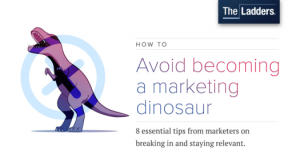Consumer behavior differs tremendously when you compare e-commerce shopping and brick-and-mortar shopping. While one shopper prefers to check out the latest trends while wearing PJs in the comfort of their home, the other prefers to put on a pair of pants and check things out in store.
Although consumers are rarely strictly in store shoppers or online shoppers, it’s important for businesses to understand which side of the consumer they’re targeting in their social media marketing efforts. If you’ve got a store front, chances are you’d prefer that your customers visit you there. If you’re e-commerce, online shopping is your only option. In order to be effective, your social media strategy should reflect your goals for consumer behavior.
Here is a breakdown to help you understand the differences (and the most important similarity) between social media marketing for e-commerce and brick-and-mortar brands.
1. Paid social advertising should be more granular for brick and mortar.
This should be a given for local advertisers, but it’s worth mentioning. As a brick-and-mortar brand, you have the advantage of knowing your audience a bit more than e-commerce brands. This means you should use everything you know about your target audience to create the most optimized social media ads possible. Get specific about location and interests. Take notice of the things surrounding your store and target consumers who have expressed interest in them. Use your roots in your city to your advantage.
For e-commerce sites, it’s a bit tougher to get as granular as a brick-and-mortar shops, but you still have a lot to play with thanks to social media’s awesome demographic targeting. HootSuite offers up an awesome guide for social advertising newbies.
2. Wide reach content has more potential for brands without geographic limits
Every brand is looking for the next piece of content to go “viral.” But is it really worth the effort for your brand? If your brand is tied to a specific location, it might not be.
For e-commerce brands, creating highly sharable content is a fantastic way to generate qualified leads to your site. Content pieces that present unique data in interesting ways are highly sharable and can be used to promote your brand to the masses.
A couple solid examples of content pieces that are trending right now are maps and graphs that provide unique data in an aesthetically pleasing format. You could try creating a map that is relevant to your product/service like this one by Frontier that shows what states have streamed the most in 2016. Or if you opt for a graph, this one by Fleximize that provides unique stats on the growth of unicorn startups is a solid example of interesting data presented in a visually appealing format. Just make sure the data is compelling enough to get users interested, but relevant enough to keep them on your site.
For brick and mortar brands, wide reach content like this doesn’t tend to be as profitable as your customer base is limited to a specific location, meaning any traffic you drive from outside of your area is unlikely the be qualified.
3. E-Commerce brands should focus on convenience
Providing a convenient experience for potential customers is key to e-commerce success. This means the entire purchasing process from initial interest to delivery should be as seamless as possible. The Messiah of all e-commerce brands, Amazon, has this process down to a science.
They start with highly targeted social ads that bring consumers to their site based on their recent behavior, offer a clean and highly functional design to browse and purchase items, provide multiple options for faster shipping and shopping cart convenience, then ship your items with up-to-date tracking and delivery notifications to ensure the most convenient online shopping process possible.
If you take a look at their social media marketing, you’ll notice their commitment to convenience as a recurring theme in their messaging.
4. Brick and mortar brands should focus on unique experiences
Because consumers will be actively meeting you/your staff at your business in a brick-and-mortar situation, the promise of a unique in-store experience will be key to attracting customers online.
Take for example, a restaurant. Restaurants are a fantastic example because the consumer must have at least some face-to-face interaction with the brand at some point, however, online marketing still plays a significant role in their success (926 million restaurant visits are driven by online marketing per year).
Although they have plenty of options, consumers choose specific restaurants over and over again because of the unique experiences they have with them. You’ll notice that the top restaurants in your town focus on things like their unique dishes, quality ingredients, welcoming environment, and excellent customer service in their social media marketing.
If you focus your social media marketing on the unique experience your consumers will have at your business, you may notice that the community will become more interested in what you have to offer.
5. Both require a personal touch
We’ve been through some of the biggest differences between e-commerce and brick-and-mortar social media advertising, but now it’s time to talk about one of the biggest similarities. All brands, no matter what they sell or how they do it, require a personal touch in their social media marketing efforts. When you think about the way you use your personal social media, this begins to make more sense.
Consumers are using their social platforms to form relationships and connect with others. Your brand should be focusing on how you can genuinely connect with target consumers using a platform built for interpersonal interaction.
Gary Vaynerchuk provides some awesome insights on personal touch social media marketing in his interview with Marketing Profs.
Understanding the differences between social media marketing for e-commerce and brick-and-mortar brands will help you create a more effective strategy for generating qualified leads and building consumer relationships online. As you continue to reform and refine your strategy over time, I highly suggest you follow industry influencers to stay in the know with industry trends and tactics. Some awesome influencers to follow for social media marketing tips are Gary Vaynerchuk and Gabe Villamizar.
Digital & Social Articles on Business 2 Community(63)






